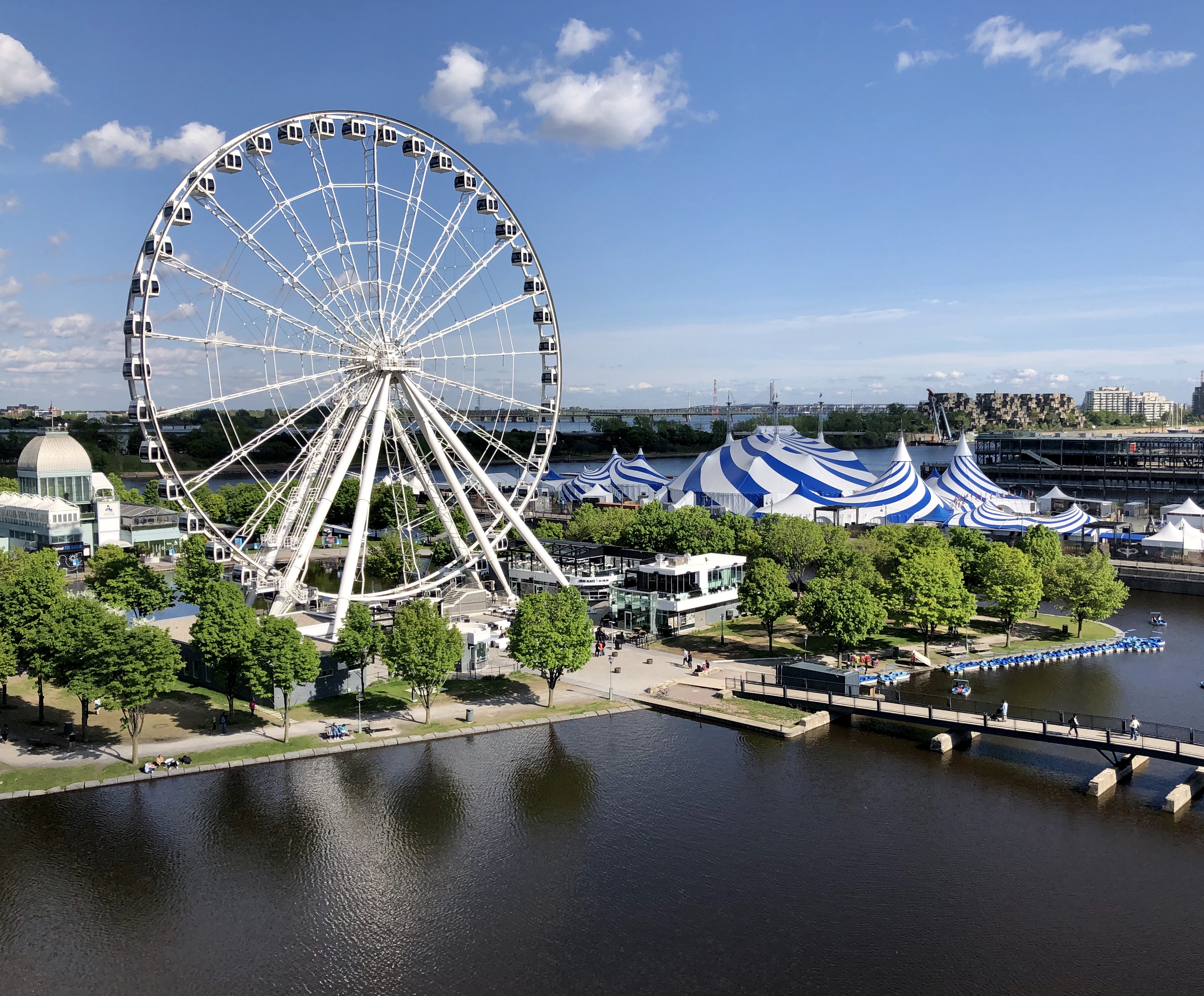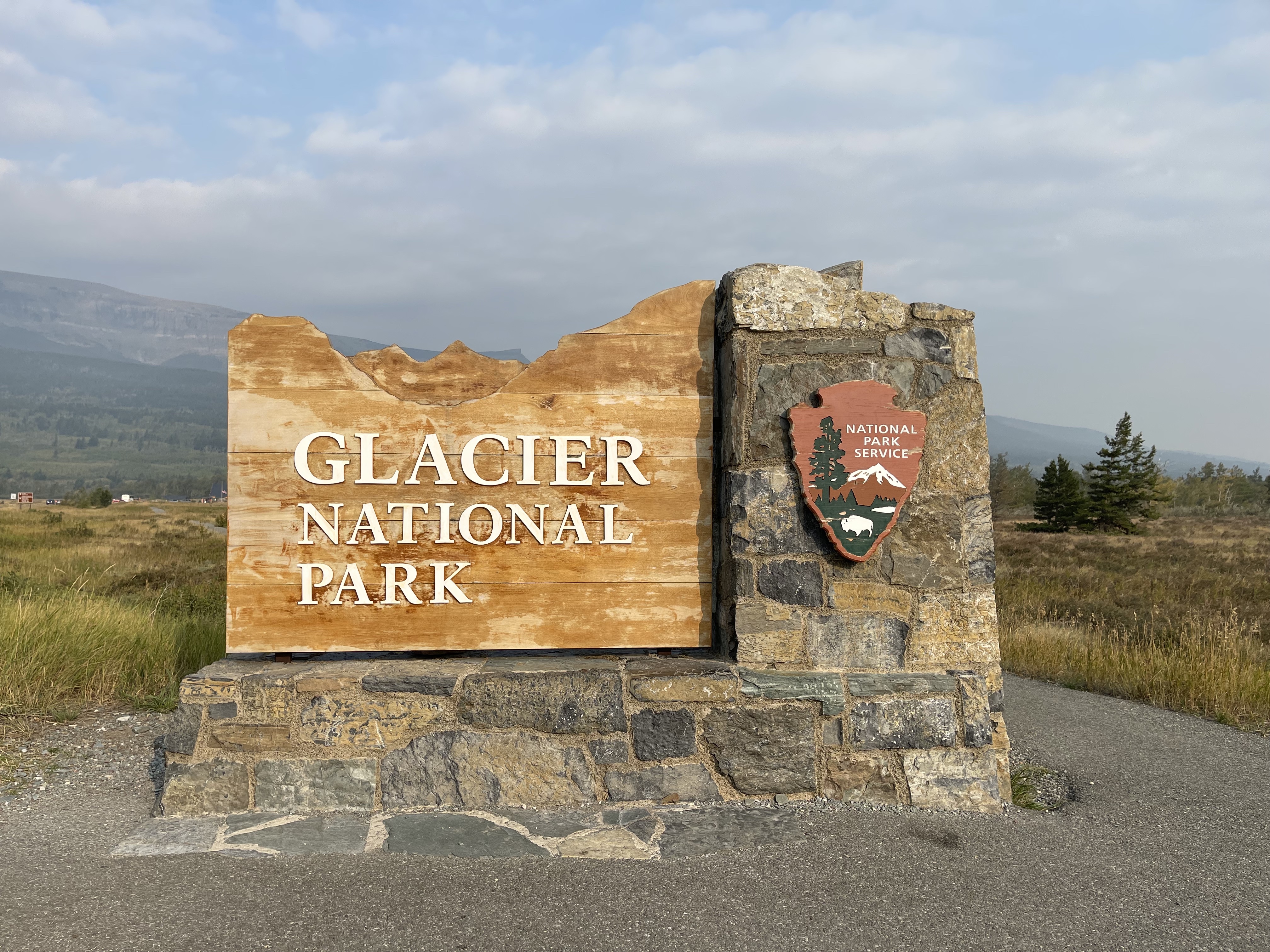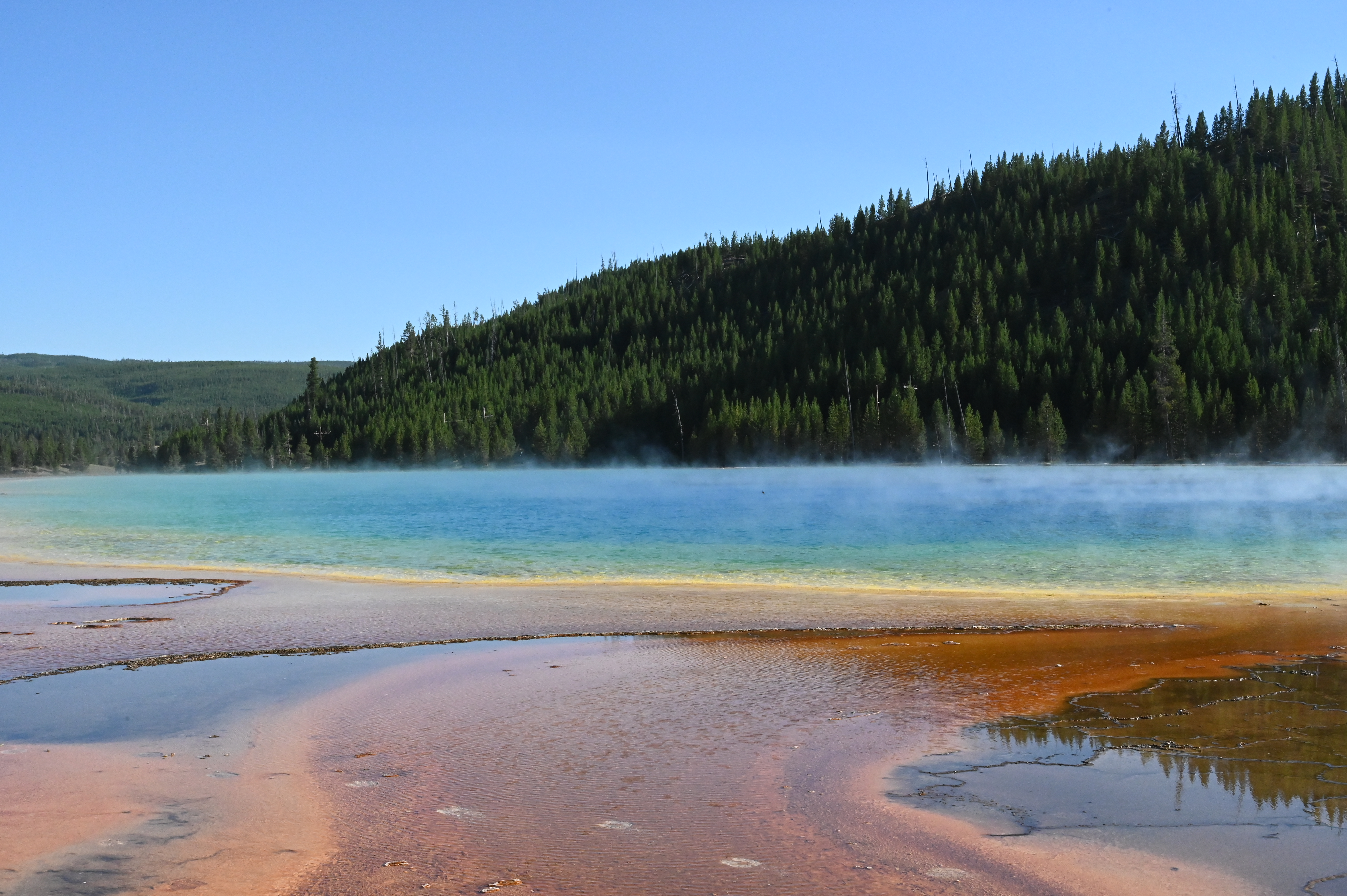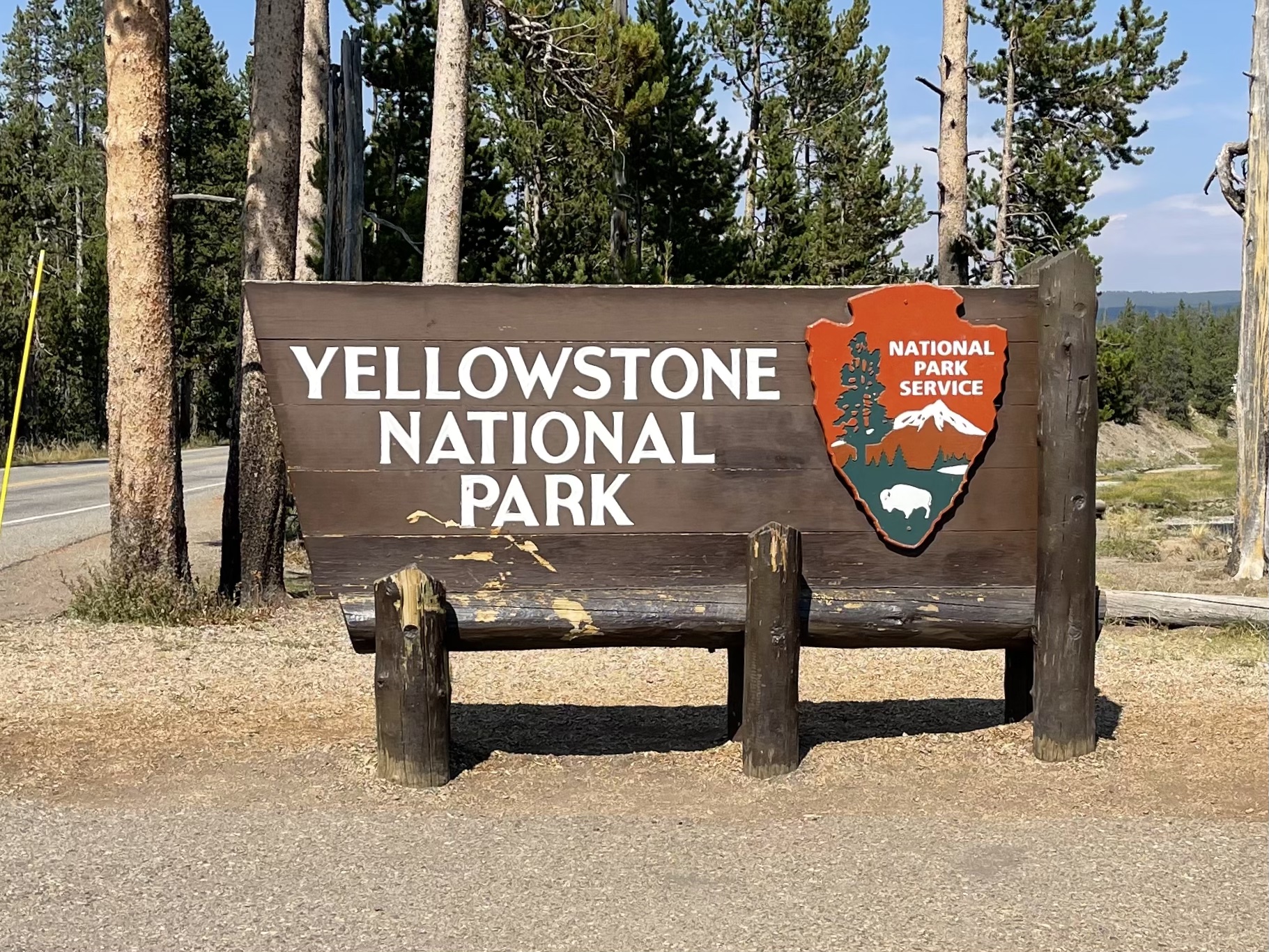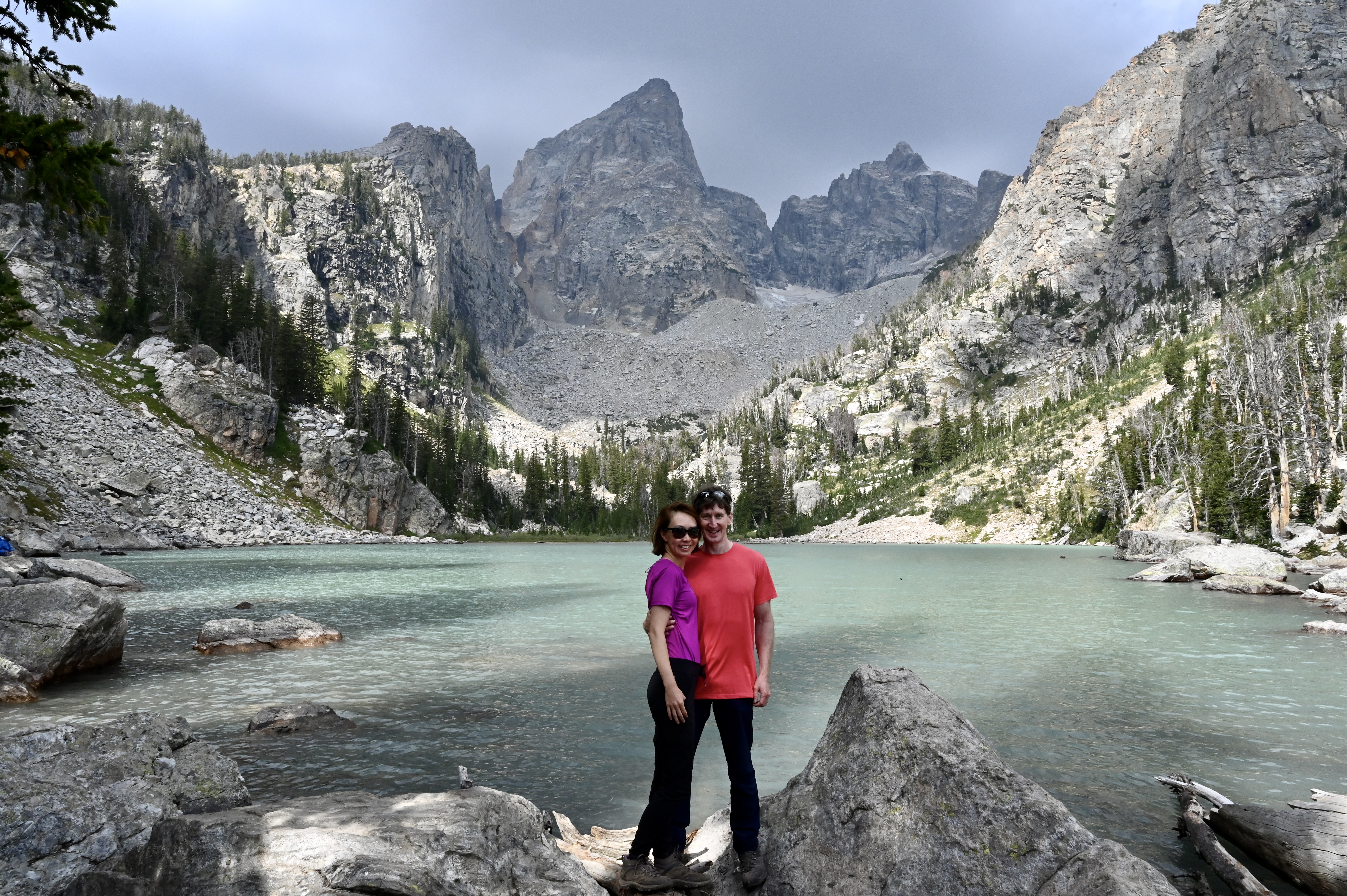Canada’s second largest city, Montreal is located on an island in the St. Lawrence River, near the southern border of the Quebec province. Montreal earns its place as the most popular city in the Quebec province for its many festivals, music, dynamic culture and food. Montreal attracts visitors from all over the world with its bewitching combination of French and British cultural influences in special Canadian fashion. If this is your first time visiting Montreal, below are the major attractions you don’t want to miss.
1. Get Lost in Old Montreal
Located in Downtown Montreal, Old Montreal is one of the main attractions to everyone who visits the city. Old Montreal is a historic district with many original European style old stone buildings that make you feel like traveling back in time to Old Europe.
Rue St-Paul, also known as St-Paul Street, is Montreal’s oldest street in the Old Montreal historic district. This narrow cobblestone street is lined with tasty restaurants, cafes, and boutique shops. It is a great place to stroll around, especially after dark when the streetlights are lit up.
2. Wander in Old Port of Montreal
The Old Port of Montreal is located in the Old Montreal area and stretches over 1.2 miles along the St. Lawrence River. The Old Port served as a trading post for the French fur trades in the 17th century and was redeveloped in the 1990s. Today, the Old Port has become a tourist site with many local entertainments and events. There are many things to do in the Old Port area, both indoors and outdoors, such as fishing, visiting the Montreal Science Center, watching a movie in an IMAX theatre, and climbing the Montreal Clock Tower.
In the Old Port area, there is a Ferris wheel, La Grande Roue de Montreal which is the tallest Ferris wheel in Canada. Take a ride on the Ferris wheel, and you will be able to see the whole Old Port from on high.

3. Visit the Notre-Dame Basilica
Notre-Dame Basilica is a symbolic historic icon in Old Montreal area, located at the corner of Saint-Sulpice Street. Notre-Dame Basilica is Montreal’s oldest Catholic church, built in 1656. Notre-Dame was originally a church, until it was declared a minor basilica by Pope John II in 1982. The Notre-Dame Basilica in Montreal has intricately impressive interior design, especially the stained-glass windows chronicling the history of Montreal. The basilica offers guided tours in both French and English for CA$ 10 per adult and CA$ 5 for kid ages 7 to 17.
The basilica is still an active church with religious ceremonies, and also tourism activities that you can check out on its website to see what you are interested in.
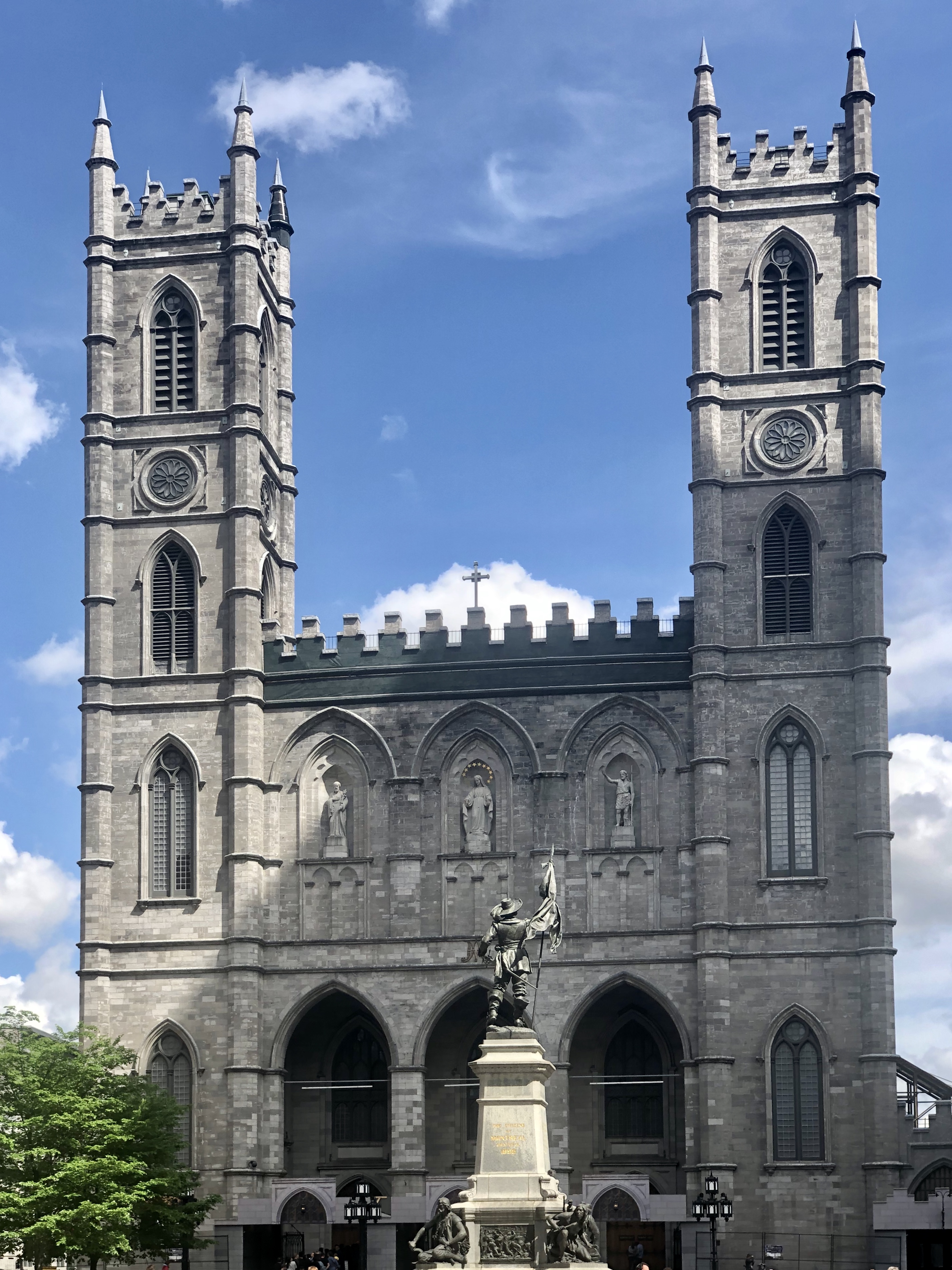
4. Hike on Mount Royal
The name of Montreal is considered to be a variant of Mount Royal. After Jacques Cartier, a French navigator who was the first European to map the gulf and the shores of the Saint Lawrence River, climbed up the mountain and named it Mount Royal in 1535.
Climb up Mount Royal, just like Jacques Cartier did almost 500 years ago, to get acquainted with Montreal. Mount Royal is located immediately west of Downtown Montreal and is a perfect place for outdoor activities. It is a small mountain, so people of all ages can hike to the top and enjoy a panoramic city view. On the weekends, Mount Royal also hosts a lot of local events. If you happen to stay in Montreal for a weekend, come to Mount Royal and join the locals. It is the best chance to discover the local culture.
If you are there on a Sunday, be sure to head to the George-Etienne Cartier Monument at eastern foot of Mount Royal for Tam-Tams, a weekly informal folk festival named after the drum circles that form around the monument. If you explore around you will see people reenacting medieval battles, practicing yoga, and slacklining.
5. Admire the St. Joseph’s Oratory
Saint Joseph’s Oratory, a minor basilica, is very unique and beautiful among the National Historic Sites of Canada. St. Joseph’s Oratory, Canada’s largest church, is located on Mount Royal’s Westmount Summit, and you need climb up to see it.
The architecture of the Saint Joseph’s Oratory was inspired by the Italian Renaissance and has a huge dome 39 meters in diameter, one of the largest domes in the world. In front of the oratory, there is also a staircase of 99 steps reserved for its pilgrims.
To visit Saint Joseph’s Oratory by foot requires a little climbing, harder than the climb up the Mount Royal. You can also take the metro to the station of Oraoire Saint-Joseph (Queen-Mary/du Frere-Andre), which is right in front of Saint Joseph’s Oratory.
6. Stroll around Le Plateau Mont-Royal
The Le Plateau Mont-Royal area is a vibrant community with many colorful townhouses. It is a very pretty place, perfect for taking lots of pictures. Take a walk around the neighborhood and absorb the local atmosphere. On Avenue du Mont-Royal and Rue Saint-Denis, there are plenty of casual cafes, laid-back restaurants, popular bars, and contemporary galleries and theaters that you can explore.
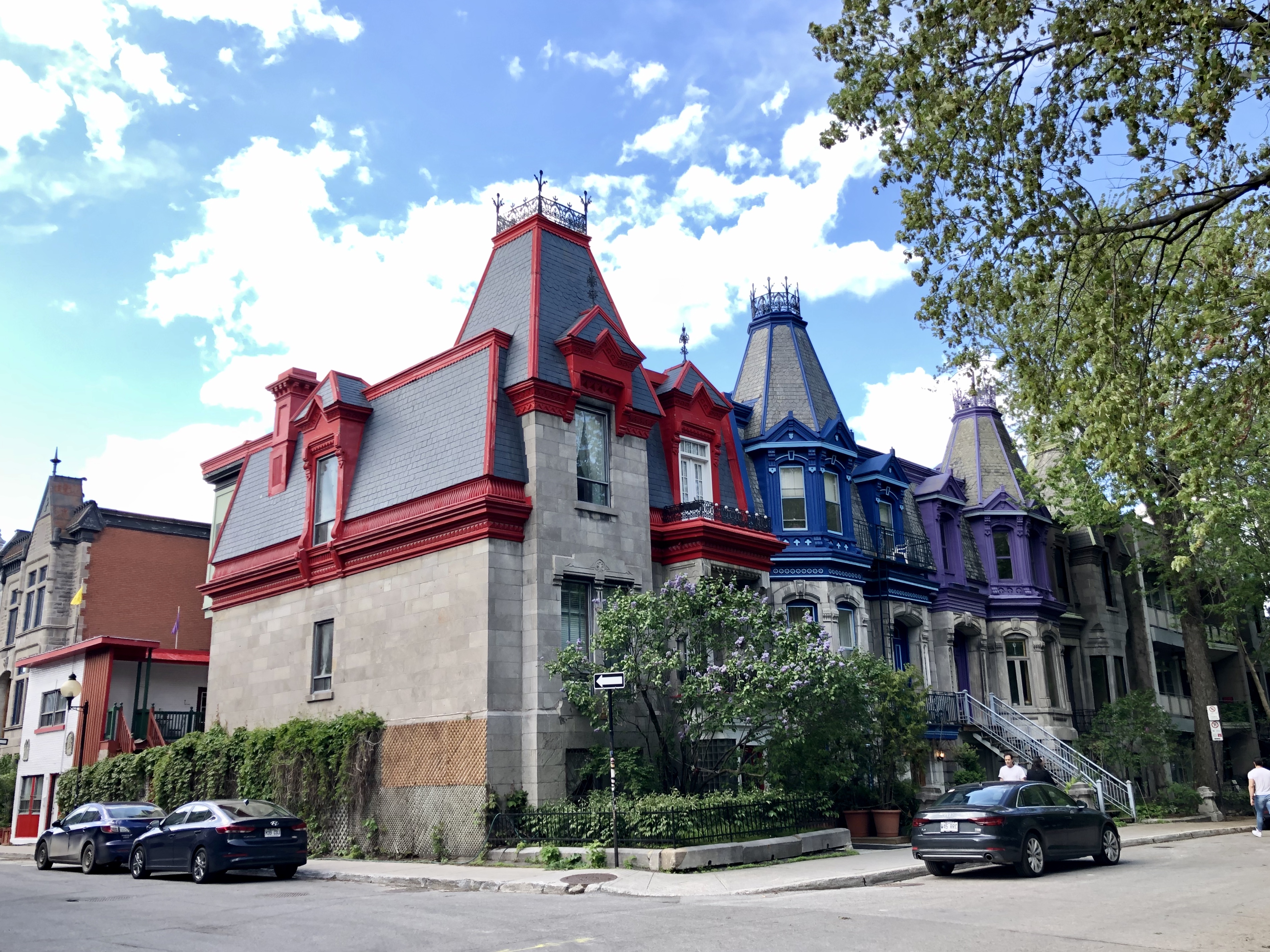
7. Explore the Botanical Garden of Montreal
The Botanical Garden of Montreal is an amazing place to visit. The botanical garden is a 190-acre landscape of thematic gardens with 10 exhibition greenhouses. The Botanical Garden is home to a remarkably diverse array of plants in all seasons and offers a scenic respite all year round to its visitors. The Garden is laid out creatively and maintained very well. It is a relaxing and refreshing retreat in a metropolis like Montreal.
The Botanical Garden also has cultural gardens, including a Japanese Garden and a Chinese Garden of extraordinary beauty and authenticity, and an Insectarium that is one of the largest insect museums in North America. You need to purchase tickets to enter the Botanical Garden and Insectarium. Tickets cost CA$20.50 for adults, and CA$10.25 for kids ages 5 to 17, including access to both attractions.
The Botanical Garden is located in the northern Plateau Mont-Royal, in Parc Maisonneuve. Take the metro Green Line and get off at Station Pie-IX.
8. Have Fun in Pare Jean-Drapeau
Parc Jean-Drapeau is located to the east of Downtown Montreal. It is a massive park and an activity center, comprised of two islands in the middle of the St. Lawrence River: Ile Saint-Helene island and the artificial Notre-Dame island.
As you approach Parc Jean-Drapeau, the bubble-shaped architecture you see is the Biosphere Environment Museum where Montreal hosted the 1967 International and Universal Exposition of the World’s fair.
The Biosphere Environment Museum is home to 15,000 species of plants and four replica ecosystems. In addition to viewing the exhibits in the museum, you can also get some hands-on experience by participating in many events run by the museum. Check here to see what events will be available when you plan to visit the Biosphere Environment Museum.
9. Tour the Underground City
The winter in Montreal can be brutal, with temperatures dropping to negative 4 degrees Fahrenheit and an average snowfall of 89 inches per year. In order to make the commute easier, the talented architects designed the Underground City to help people to get where they are going without stepping outside.
The Underground City is a network that connects multiple commercial buildings, hotels, and universities. It was designed to help Canadians go through winters, and today it is filled of independent shops, convenience stores, cafes and fast-food restaurants. With stores lining every walkway, you may feel like you are in an endless shopping mall.
10. Enjoy the Montreal Museum of Fine Arts
In Montreal, you can find many kinds museums, from art museums to environmental museums and insectariums. Montreal Museum of Fine Arts is one of the most popular museums, and attracts 1.3 million visitors every year. Entrance is free for visitors under 30. The museum’s exhibitions range from visual art to history and science, including many Canadian artworks.
11. Experience the Architecture of Habitat 67
Habitat 67 is a residential community with an unusual modern and aesthetic architecture. Habitat 67 gained worldwide acclaim as a “fantastic experiment” and an “architectural wonder.” Because of that it draws a lot of tourists who come to visit. Designed by an Israeli-Canadian architect Moshe Safdie, Habitat 67 was initially planned to serve as affordable housing, but turned out to be extravagant. You can walk around the outside and see this interesting architecture for free or book a tour to see what the inside looks like.
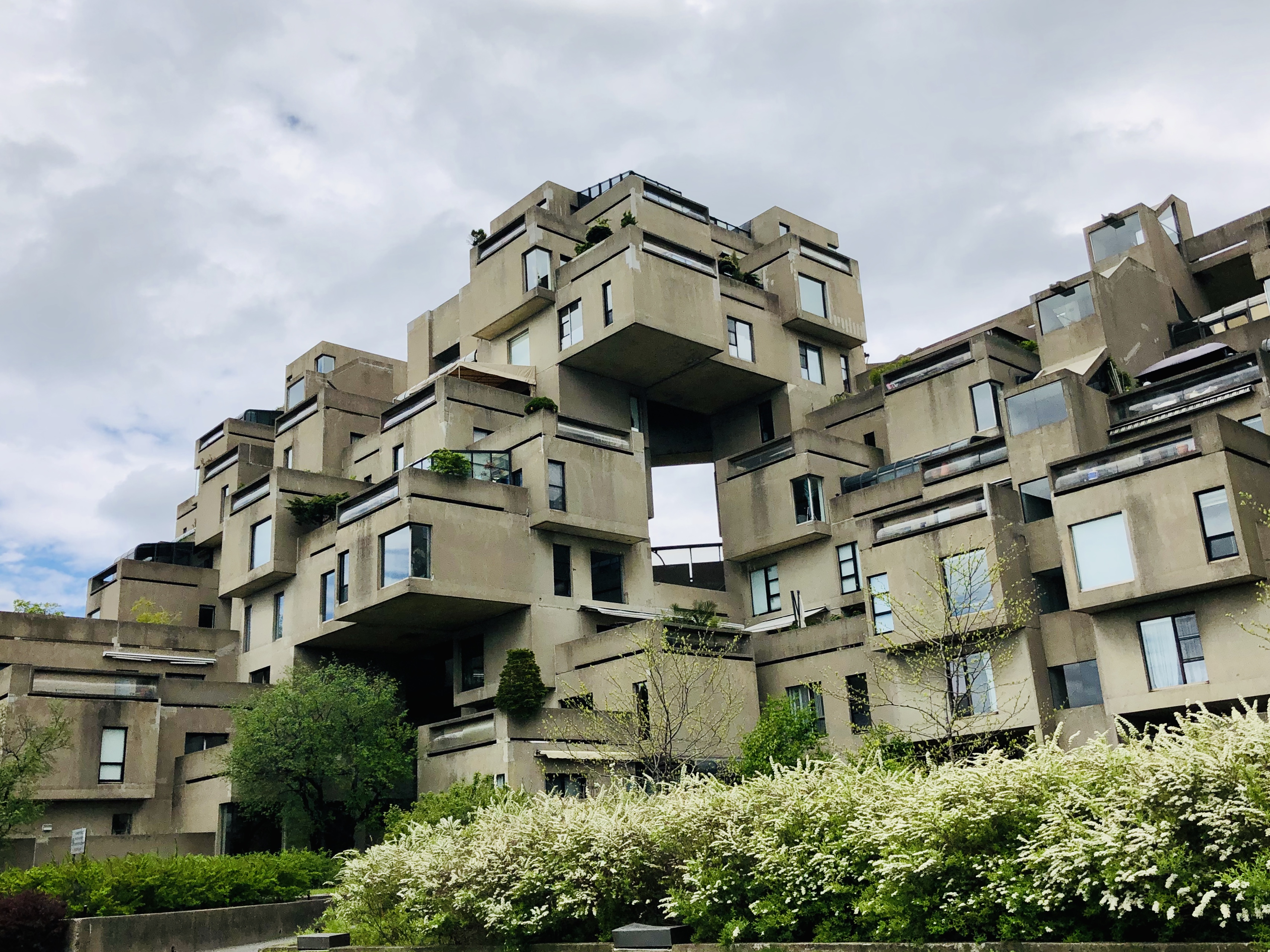
12. Get a View from 360° Observatory
Besides climbing up to the top of Mount Royal, the 360° Observatory, on the 46thfloor of the Place Ville Marie, also provides a wonderful city view. The Place Ville Marie is the second highest building in Montreal. You will need to purchase tickets to access 360° Observatory, at a cost of CA$21.85 per adult, CA$10.35 per child ages 5-12, CA$17.25 per youth, and CA$20.70 per Senior.
You can also dine at Les Enfants Terribles, a fine restaurant on the 44th floor of the Place Ville Marie. Enjoy the delicious food and wine with the spectacular view. Make sure you make a reservation to be seated close to windows where you get the best view of Montreal from above.
13. Shop at Jean Talon Market
Located in Little Italy, Jean Talon market is an open market which has been in operation since the 1930s. Jean Talon market sells many kinds of fresh fruits, vegetables, and seafoods, and you can even sample them before you purchase. If you plan to cook on your own in Montreal, Jean Talon market is where you can shop like a local. Besides groceries, there are plenty of food stands that offer you the tastiest crepes, samosas, Turkish pastries and more for you to try. Picnic tables are also available, so Jean Talon market is a great place to grab lunch.
14. Eat All the Poutine
Poutine is a classic French-Canadian dish that is available all over the province of Quebec, but Montreal is the poutine capital of the world. French fries and cheese curds topped with a brown gravy makes a delicious poutine, but you can find all kinds of poutine in Montreal, on almost every restaurant’s menu. This local traditional food is one of the best ways to get acquainted with the city. Don’t miss eating poutine when you are in Montreal.
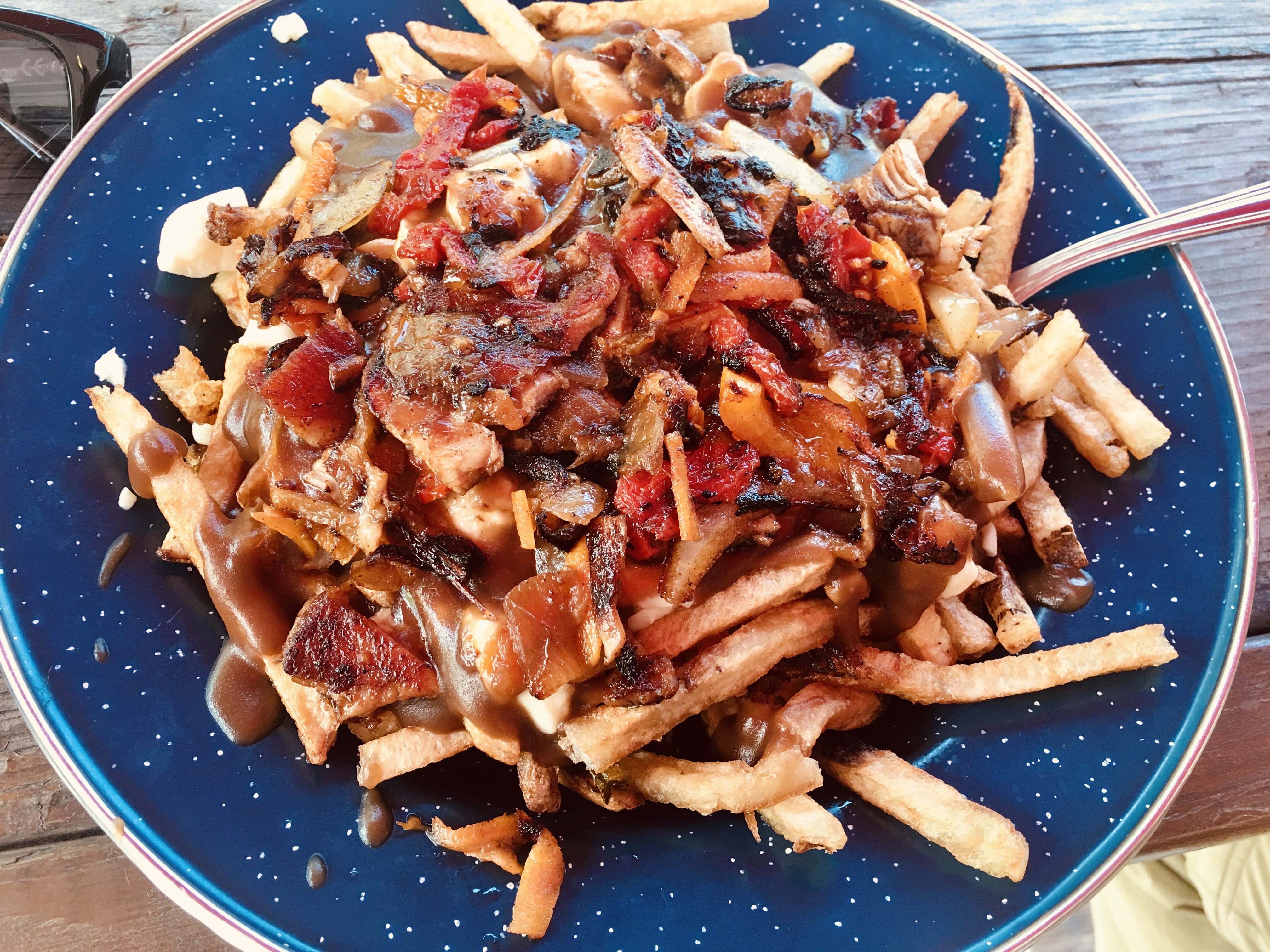
I hope this post piques your interest in Montreal and helps you make the most of your trip. See you in my next post!

